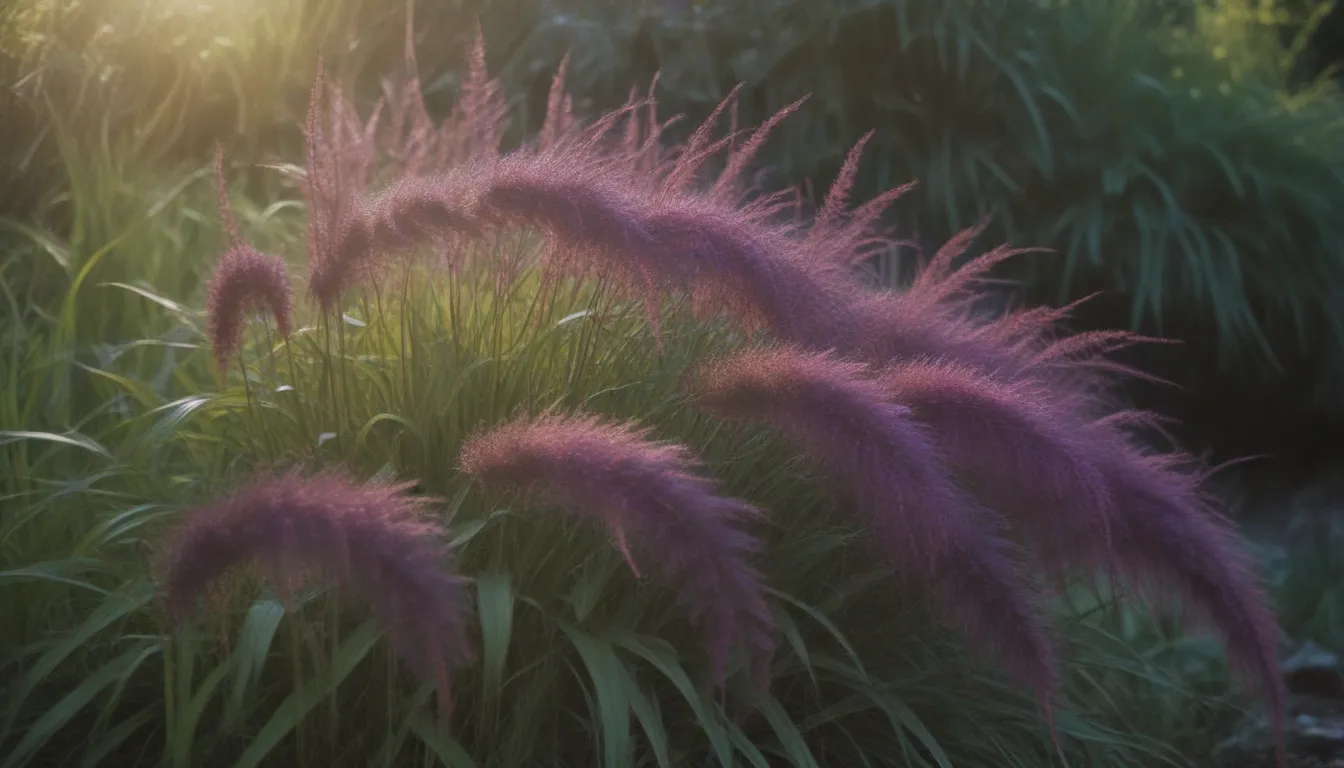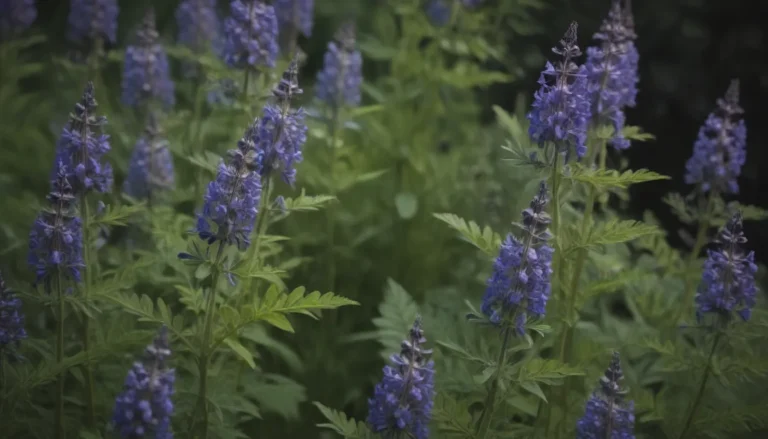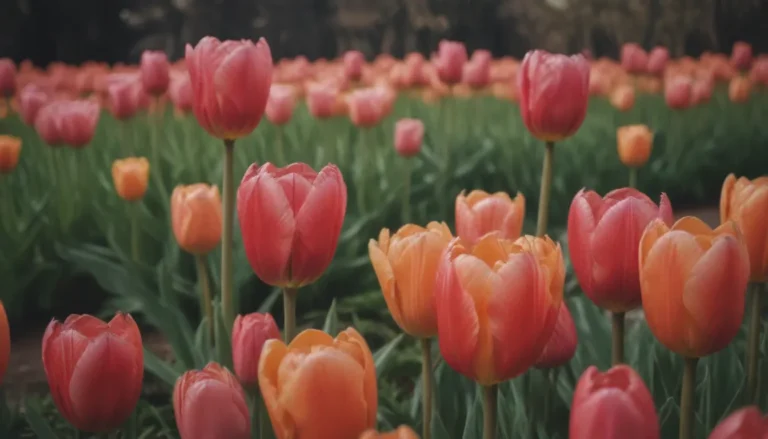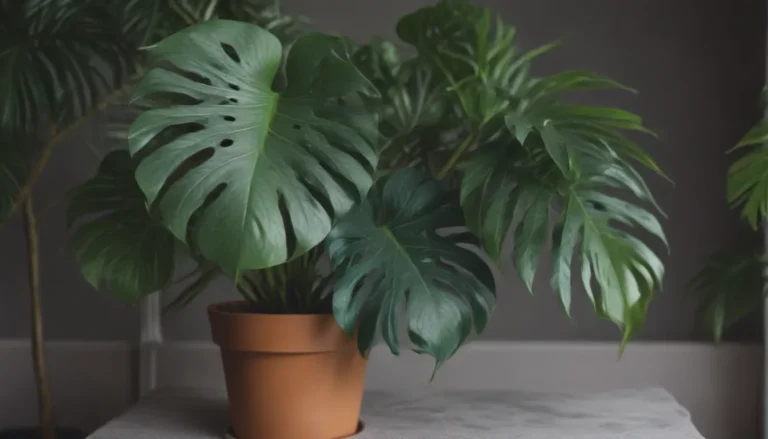Everything You Need to Know About Growing and Caring for Purple Fountain Grass

If you’re looking to add a touch of elegance and beauty to your garden, purple fountain grass is the perfect choice. With its arcing spikes of nodding purplish flowers and long, slender burgundy leaves, this ornamental grass is sure to make a statement in any landscape. In this comprehensive guide, we’ll walk you through everything you need to know about growing and caring for purple fountain grass.
Why Purple Fountain Grass?
Purple fountain grass, also known as Pennisetum setaceum, is native to Africa and Asia. It’s a fast-growing ornamental grass that is best planted in the spring. The autumn seed heads of this plant are not only attractive but also preferred in fall flower gardens. Additionally, purple fountain grass produces feathery seed heads that can be used in dried flower arrangements, adding a unique touch to your home decor.
Purple Fountain Grass Care
While purple fountain grass may not be very cold-hardy, it is still well worth growing in cold-winter regions. This plant is a popular choice as a focal point in mixed beds and container gardens. When planting purple fountain grass, keep in mind that mature plants can reach up to 5 feet tall and nearly as wide, so make sure to give them plenty of room to grow.
Here are some essential care tips for purple fountain grass:
– Light: Purple fountain grass prefers to be planted in full sunlight, although it can tolerate some light shade.
– Soil: This plant isn’t too picky about soil conditions and can thrive in loamy soil as long as it’s well-draining.
– Water: While purple fountain grass is drought-tolerant, it should be watered consistently, especially when it’s getting established in your landscape.
– Temperature and Humidity: Purple fountain grass is versatile when it comes to temperature conditions and can withstand cold weather down to about 20 degrees Fahrenheit. It has no special humidity requirements, making it easy to care for in various climates.
One of the perks of purple fountain grass is that it can be a focal point in a mixed bed, as well as used for creating visually appealing borders or privacy screens. If you’re looking to add a pop of color and texture to your garden, this ornamental grass is the perfect choice.
Types of Purple Fountain Grass
There are several varieties of purple fountain grass that you can choose from to suit your garden’s needs. Some popular types include:
– Pennisetum setaceum ‘Fireworks’
– Pennisetum alopecuroides ‘Burgundy Bunny’
– **Pennisetum alopecuroides ‘Little Bunny’
Each variety has its own unique characteristics, so be sure to select the one that best fits your garden’s aesthetic.
Pruning and Propagation
Properly pruning your purple fountain grass is essential for maintaining its health and appearance. The standard way to prune ornamental grasses like purple fountain grass is to cut it back severely in late winter or early spring before it begins its new growth. This helps eliminate dead foliage and stimulates the growth of new leaves.
Purple fountain grass can be propagated through division or seeds. While the plant may self-seed in the garden, root division is a faster and more reliable form of propagation. Division should be done in the fall after flowering when the plant is going into dormancy.
How to Grow Purple Fountain Grass From Seed
Growing purple fountain grass from seed is relatively easy, but it does take some time to see results. Collect the seeds from the flowering stems in the fall when they’re dry, and follow these steps to grow the grass from seeds:
- Sow the seeds in a well-draining soil mixture.
- Keep the soil consistently moist until the seeds germinate.
- Provide bright light and warmth for optimal growth.
- Transplant the seedlings into larger containers or your garden once they are established.
Overwintering Purple Fountain Grass
If you live in a cold-winter region, you can overwinter your purple fountain grass by digging it up and placing it in a planting container indoors. Cut the plants down to 3 inches tall and provide them with moderate light and water throughout the winter. Once the weather warms up in the spring, you can acclimate the plants back to outdoor conditions.
Common Pests and Diseases
Purple fountain grass is relatively resistant to pests and diseases, making it a low-maintenance plant for your garden. However, you may encounter slugs, snails, or rust fungus, especially in areas with trapped moisture. To prevent these issues, ensure proper spacing between plants for adequate airflow.
Purple fountain grass is a stunning addition to any garden, providing color, texture, and visual interest year-round. Whether you’re looking to create a focal point in a mixed bed or add a touch of elegance to your container garden, this versatile ornamental grass is sure to impress.
In conclusion, growing and caring for purple fountain grass is a rewarding experience that will enhance the beauty of your garden. With the right care and attention, this plant will thrive and bring joy to your landscape for years to come. So why wait? Plant some purple fountain grass today and watch your garden come to life with vibrant color and texture.





